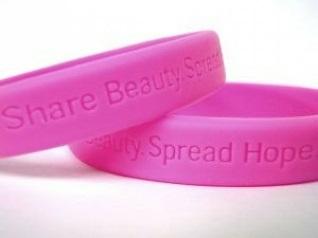 When I have the opportunity to speak with groups about breast cancer, I am constantly reminded that speaking engagements continue to be learning experiences for me.
When I have the opportunity to speak with groups about breast cancer, I am constantly reminded that speaking engagements continue to be learning experiences for me.
Within each age group I speak with, there are those who choose to believe the different myths about who gets breast cancer. These myths keep many of them from getting routine, life saving breast cancer screenings. Whatever the age group, though, there are those in all groups that share one, common reason for not being screened…fear.
Last week and again yesterday, I got to met with seniors, 65-85 years, who are living in retirement communities. I spoke to close to 100 women and 6 men. I shared the statistics on being diagnosed with breast cancer at their ages, and statistics on dying from the disease. Most were upset to learn that women 65-85 years old have the second highest rate of newly diagnosed breast cancers of all age groups affected by breast cancer, second only to women 55 to 64 years old. They were also unaware that their age group had the highest rate of dying from breast cancer.
Statistics are most often computed on the incidence of breast cancer diagnosis and mortality by age group classifications of 25-49; 50-64, 65-85 years.
Like many of their under 40 counterparts, who believe that age protects them from getting breast cancer because they are young, many seniors I spoke with believe that age protects them from getting breast cancer because of their advancing age. Another age myth that most believed was that cancer over 65 years would be slow moving and not fatal. Embracing these kinds of myths is dangerous to their health.
Most of the women shared they had not had a mammogram in several years.
Some seniors shared that existing medical conditions make preventative care a low priority. Others were concerned about how they would be treated, if diagnosed with breast cancer. Some had read, and this is documented in recent studies, that assumptions are sometimes made about seniors and their tolerance for chemo and radiation. Subsequently, some are not always offered the same treatment as younger women and that this would impact on their survival.
Participants in both groups had many questions that included wanting explanations about Angelina Jolie’s preventative surgical choices; the pros and cons of reconstruction, and if men pass on breast cancer gene mutations to their children.
Several of the women identified themselves as survivors and shared what they needed most from family and friends while in treatment. One woman stressed the importance of having a loved one keep her company in chemo. Another spoke of the little things that got her through: a call from a friend; funny cards in the mail or in email; invitations to time outs from all things cancer…a walk, lunch, a movie, a game of scrabble.
A caregiver of a spouse, now deceased, shared how much she needed and benefited from someone giving her a time out. Much as she loved her husband, she longed for the normalizing experiences of a lunch out, a long walk, anything that gave her a brief respite from care giving.
What I heard that was unexpected …fear of yet another disease that would make them even less active, give more pain and increase isolation. Most agreed that the isolation was their greatest fear.
One lady spoke of loss. She said,”By the time you are a senior you have experienced many losses. Needing a mastectomy would be another loss. I don’t want to think about that.”
I learned a lot; I appreciate that.
 When I have the opportunity to speak with groups about breast cancer, I am constantly reminded that speaking engagements continue to be learning experiences for me.
When I have the opportunity to speak with groups about breast cancer, I am constantly reminded that speaking engagements continue to be learning experiences for me. 
